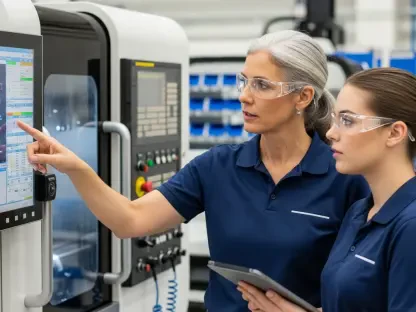Despite being outlawed globally for over four decades due to their toxic nature, polychlorinated biphenyls (PCBs) still pose an environmental hazard, with recent research indicating that their presence in the environment could be increasing. These chemical compounds, once extensively used in industry, persist in our ecosystems, affecting both human health and wildlife. While the world moved to prohibit their production and intentional use to curtail their dangers, PCBs continue to seep into our surroundings from past uses and improper disposal, suggesting that modern contamination levels may rival those from the time of their widespread application. The ongoing problem of PCB pollution underscores the challenges of managing the long-term consequences of persistent organic pollutants and raises concerns about the effectiveness of current environmental protection measures. Addressing the legacy of PCBs requires a comprehensive understanding of their sources, persistence, and the potential for ongoing release into the environment.
The Modern PCB Problem: Inadvertent Creation and Release
New research brings to light that PCBs are not just relics of past industrial practices but could be produced inadvertently as byproducts of current manufacturing processes. This section delves into the specifics of the research findings, including potential new sources of PCB pollution.
The Role of Pigments and Dyes in PCB Production
It’s becoming increasingly apparent that modern chemical processes, used in manufacturing pigments and dyes, may inadvertently produce PCBs. Researchers point out that many of these processes involve chlorination, which, under specific conditions, can lead to the formation of PCBs. Although the pigment industry itself may contribute less than 0.1% of overall PCB production, when considering the scale of global manufacturing, even such a minute percentage can equate to significant environmental release of these toxic substances.What heightens concern is not just the production but the lack of stringent controls over these byproducts. Without adequate monitoring and control measures, these PCBs can easily slip through the cracks, unnoticed, and enter the environment. This highlights the need for industries to be aware of the potential for PCB byproduct production and take active steps to mitigate it.
The Need for Expanded Monitoring
The challenge of detecting and quantifying PCBs in the environment is complex. A vast majority of monitoring focuses on a select few indicator PCBs rather than analyzing the complete suite of 209 congeners. As a result, a large fraction of PCB pollution may go undetected. This limitation severely undermines the ability to grasp the full extent of PCB contamination and its impact on ecosystems and human health.The call for expanded monitoring is therefore not simply a matter of increasing the number of tests but of broadening the range of PCBs that are tracked. Researchers are urging environmental agencies to not only concentrate on historically used PCB mixes but to also include newer byproduct PCBs. An accurate assessment of environmental pollution requires a comprehensive view that encompasses all potential sources of PCBs.
The Challenge of Tracking and Regulation
Measuring the scale of unintentional PCB pollution is fraught with difficulties, from the lack of comprehensive data to the inadequacies of current regulatory frameworks. This section highlights the intricacies of managing and mitigating the impacts of these pollutants.
Reassessing PCB Emission Estimates
Evaluating the environmental impact of PCB emissions is complex. While recent research has increased our understanding of PCB production volumes, there is still a significant risk of miscalculation. For example, some projections may overstate the issue by relying on theoretical production capacity, which may not reflect actual emissions, leading to an overestimation of the problem.Conversely, there is also a danger of serious underestimation, as assessments often consider a narrow range of factors. This limited perspective can result in ignoring the broader context, potentially missing a sizable quantity of PCBs contaminating the environment. The discrepancy between overestimation and underestimation highlights the necessity for a comprehensive and precise approach to measuring PCB releases.Accurate quantification is essential as it lays the foundation for policy formulation and regulatory action aimed at ecological preservation and safeguarding human health. Striking the right balance in estimating PCB release is not straightforward, but it is imperative to ensure that interventions are correctly scaled and resources are efficiently allocated to minimize the environmental footprint of these hazardous substances.
Calls for Industry and Regulatory Reform
The call for reform in both industrial practices and policy frameworks has become urgent to tackle the accidental emission of polychlorinated biphenyls (PCBs). Industries working with chemicals likely to produce PCBs must enhance monitoring and enforce stricter controls. Recognizing and listing unintentional PCBs as newly recognized contaminants demands immediate action.Regulatory agencies are tasked with evolving their strategies to better address PCB contamination. This involves more comprehensive reporting obligations, advanced waste handling measures, and incentivizing the use of safer alternatives in PCB-prone sectors. Such forward-looking regulatory adjustments are imperative for minimizing the environmental and health risks associated with these toxic pollutants. The interplay between improved industry standards and progressive regulations is pivotal for a sustainable approach to managing PCB pollution.
The Path Forward: Addressing the PCB Threat
With the recognition of byproduct PCBs as potential new sources of pollution, scientists and experts are rallying for action. This section examines the steps that can be taken to confront the risks PCBs pose to our health and environment.
Advancing Research and Awareness
Intensifying research on the unintended generation of PCBs is imperative to truly grasp the extent of the contamination they cause. Deepening our understanding of these byproducts is critical, not just in scientific spheres but also in informing the general public. Educated citizens can exert pressure on policymakers and demand greater corporate responsibility, sparking essential change.To combat PCB contamination effectively, a concerted effort from all societal sectors is essential. This includes enhanced communication between researchers, public health officials, industry leaders, and informed community members. By uniting these forces, a comprehensive strategy to address the presence of PCBs in the environment can be developed and implemented. This collaborative effort is the cornerstone of mitigating PCB-related risks and ensuring the well-being of both the environment and public health.Only through such an inclusive and informed approach can we hope to resolve the challenges posed by PCBs.
Strengthening Environmental Protections
As we come to grips with the potential magnitude of byproduct PCB pollution, it is vital that environmental protections are bolstered. Comprehensive detection methods, stricter environmental standards, and robust safety regulations are all essential elements in the quest to combat PCB pollution. It is only through the concerted efforts of research bodies, regulatory agencies, industries, and the public that we can hope to mitigate the risks posed by these enduring environmental hazards. The recent study serves as a stark reminder that the threat of PCBs is far from eradicated. It underscores the importance of remaining vigilant and proactive in our approach to environmental stewardship and public health protection. Through this article, readers will gain insight into the complexities and current status of PCB pollution and understand the significance of addressing this emerging environmental crisis.









